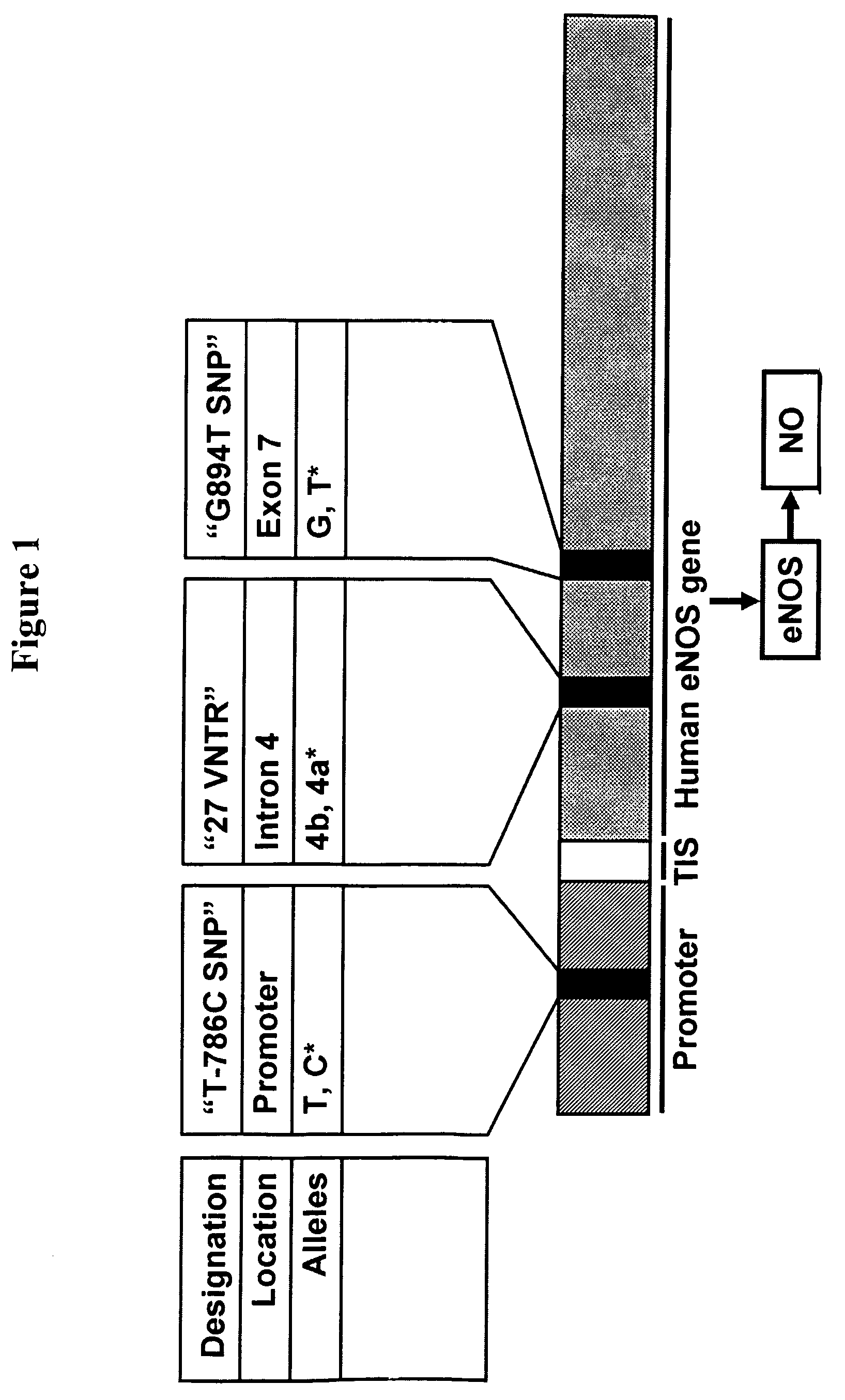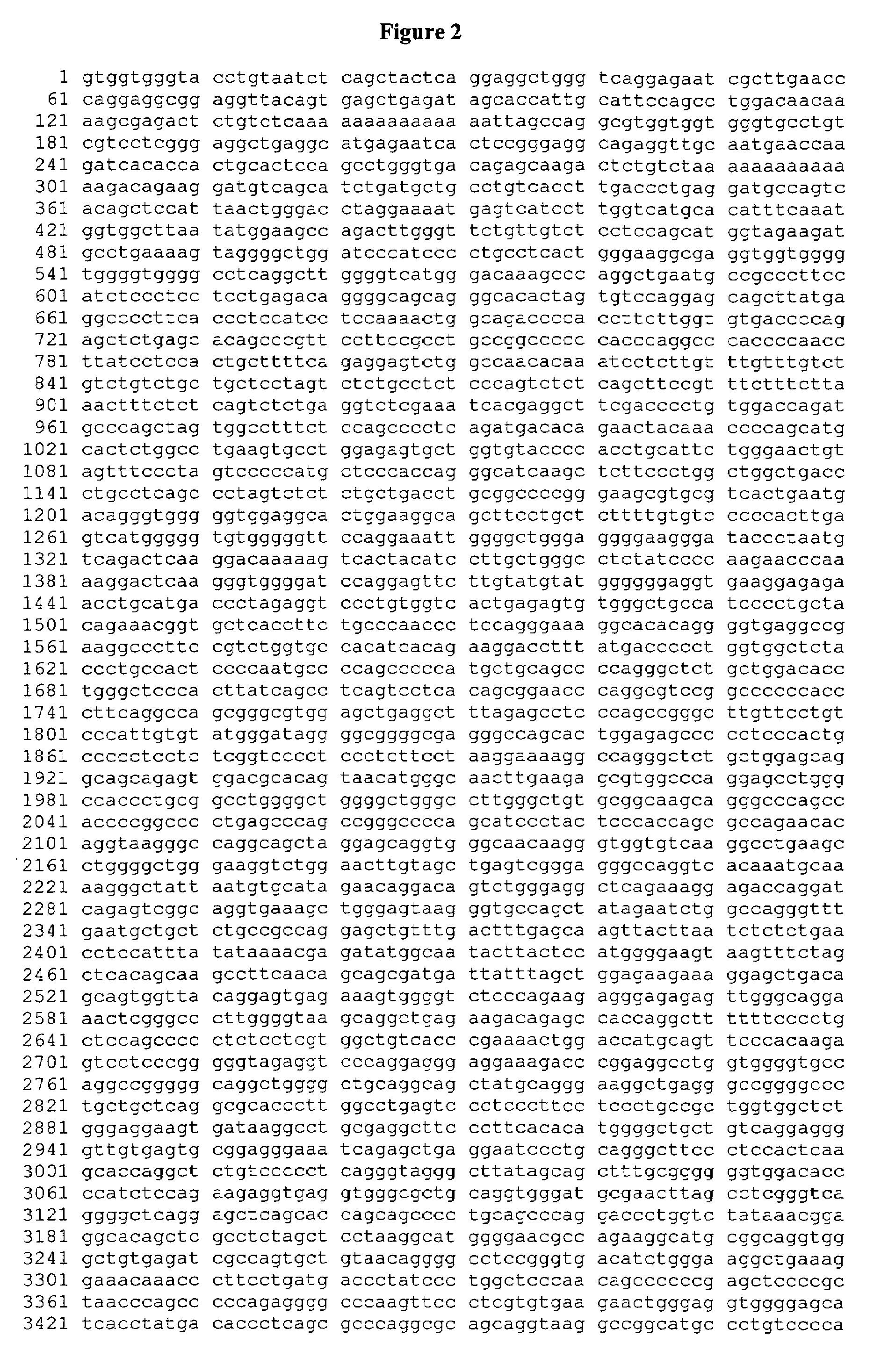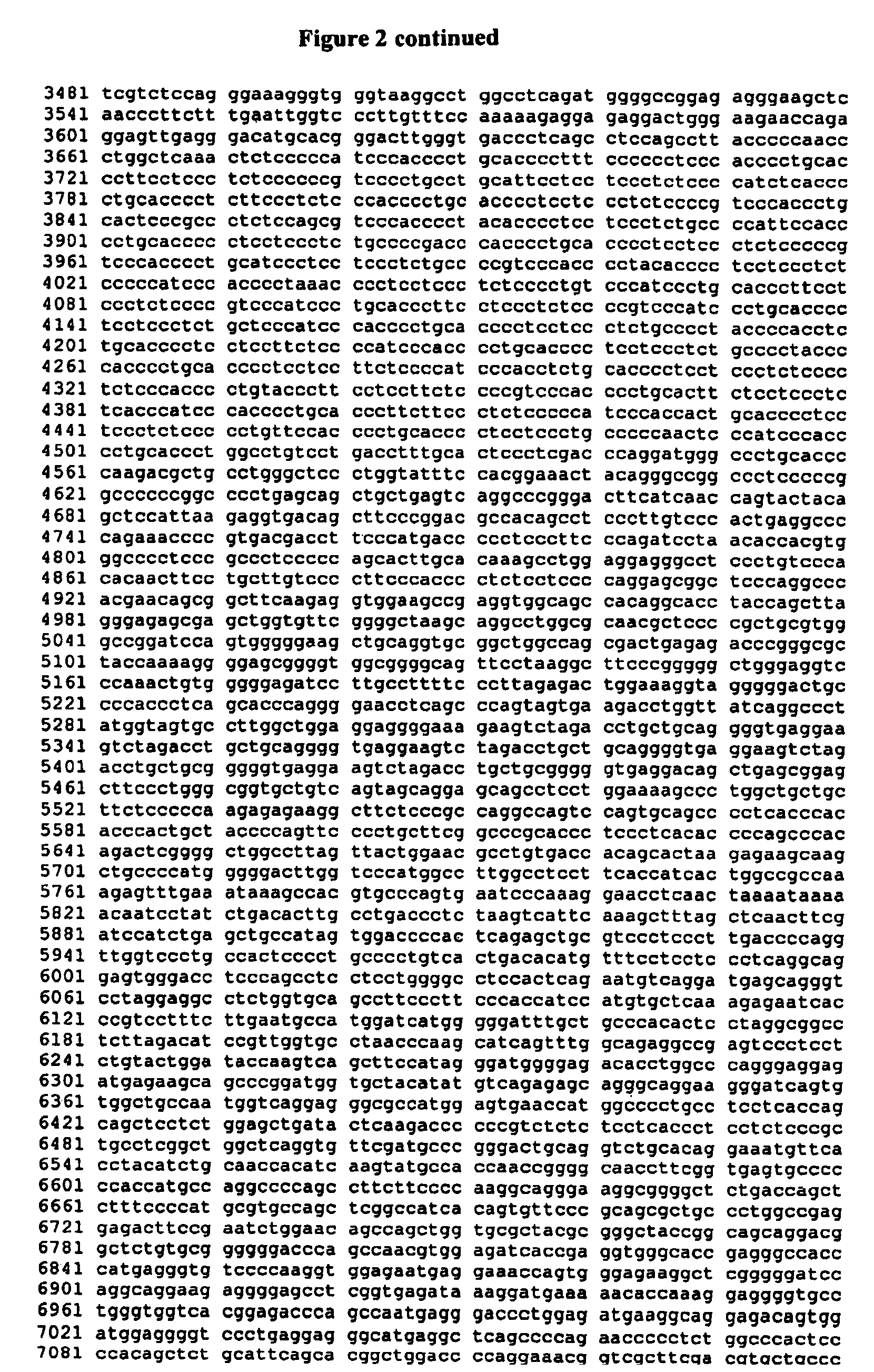Assessing brain aneurysms
a brain aneurysm and brain aneurysm technology, applied in the field of brain aneurysms assessment, can solve problems such as death or marked disability, and achieve the effect of rapid diffusing signaling and high probability of experiencing brain aneurysm ruptur
- Summary
- Abstract
- Description
- Claims
- Application Information
AI Technical Summary
Benefits of technology
Problems solved by technology
Method used
Image
Examples
example 1
The Presence of Tandem eNOS Gene Polymorphisms Identifies Brain Aneurysms Prone to Rupture
[0028]The following experiments were performed to determine whether polymorphisms in eNOS can be used to identify brain aneurysms prone to rupture.
Study Participants
[0029]A prospective case-control study involved 107 human subjects each of whom gave informed consent for participation. The control group consisted of 49 people consecutively presenting to the Mayo Clinic with a diagnosis of unruptured intracranial saccular aneurysm. The case group was comprised of 58 people consecutively admitted to the Mayo Clinic diagnosed with aneurysmal subarachnoid hemorrhage (SAH) based on history and radiological findings, including both admission head computerized tomography scan and 4-vessel cerebral angiography.
[0030]Three particular eNOS polymorphisms were analyzed (FIG. 1). A single 20 mL sample of peripheral venous blood was obtained from all participants for subsequent DNA extraction ...
PUM
| Property | Measurement | Unit |
|---|---|---|
| diameter | aaaaa | aaaaa |
| diameter | aaaaa | aaaaa |
| diameter | aaaaa | aaaaa |
Abstract
Description
Claims
Application Information
 Login to View More
Login to View More - R&D
- Intellectual Property
- Life Sciences
- Materials
- Tech Scout
- Unparalleled Data Quality
- Higher Quality Content
- 60% Fewer Hallucinations
Browse by: Latest US Patents, China's latest patents, Technical Efficacy Thesaurus, Application Domain, Technology Topic, Popular Technical Reports.
© 2025 PatSnap. All rights reserved.Legal|Privacy policy|Modern Slavery Act Transparency Statement|Sitemap|About US| Contact US: help@patsnap.com



